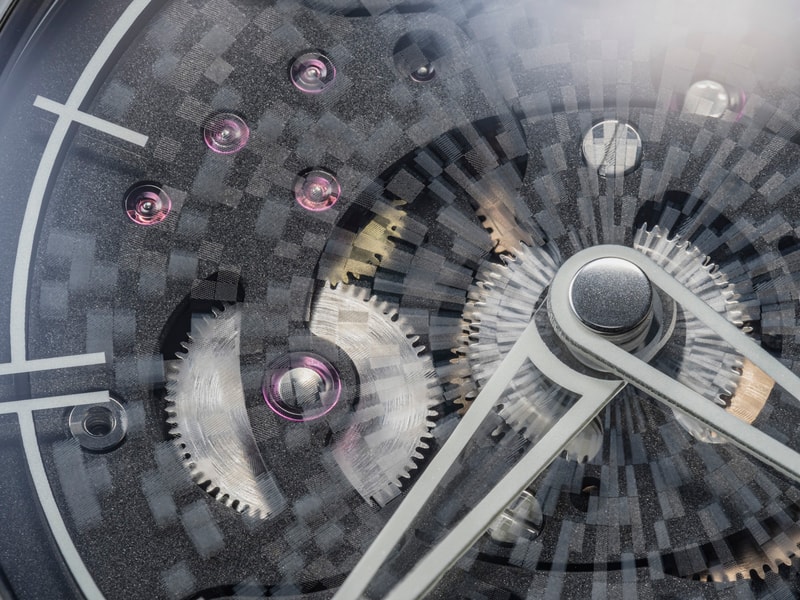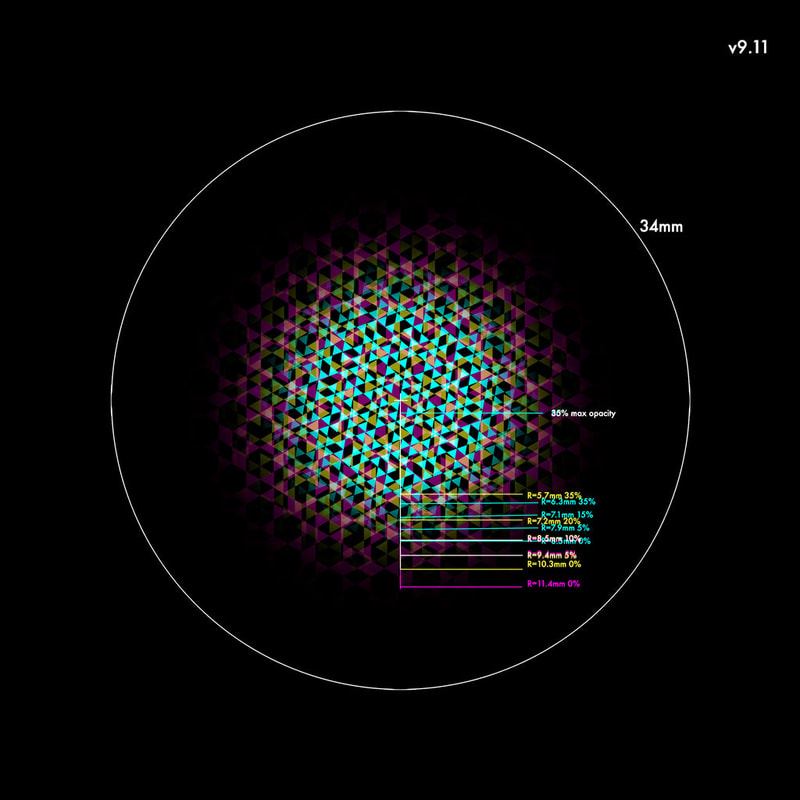
The first in a new series with an inside look on the details of what goes into our watches – and yes, some future product hints, too. We realize that not everything we do is obvious or fully explained, so the intent is to share some insights into the extensive thought process behind the metal (or sapphire, or leather).

On the face of it, creating a new mosaic should be simple: draw a pattern, send it to the laser machine, put in a blank crystal, and hit the big red button. In reality, it’s (quite a bit) more complicated than that. Firstly, the laser process creates opacity by focusing a burst of energy onto a very small spot within the crystal, which is then vaporized. The resulting material remains inside the crystal, which is now no longer homogenous; this creates tension withing the material. Doing this a lot, and unevenly, creates a lot of tension that can result in cracking or shattering – as we discovered during development of the first mosaic.
Though synthetic sapphire crystals are of very high quality compared to natural ones, and they’re more than strong enough in larger sizes (think outer crystals) for external use, any microscopic flaws in the crystal structure are increasingly stressed when you start adding artificial inclusions within it. This must be compensated for in several ways with a mosaic: by evening out the distribution of stresses in the final pattern, by lasering in an order that distributes the stresses, and by using a crystal of as high purity (and as few flaws) as possible. These crystals are significantly more expensive than the usual ones used for front or rear glasses.
The whole process is further complicated by the need to turn a dot pattern into a shaded area: we use a mix of halftoning and linear rasterization to achieve the perceived fade and opacity change – there isn’t an algorithm to do this, which means a lot of manual work for each square. It’s clearly visible if you look very closely at the dial. Having the pattern on several layers also throws the z or vertical axis order into the mix, too: you can’t laser through an existing pattern because it dissipates the energy. And don’t get me started on internal reflections and ghost patterns.
We inadvertently made life difficult for ourselves with the first mosaic because of the radial symmetry: notice how all of the lines converge at the center, which created a hot spot and thus necessitated reducing opacity to prevent cracking. The second generation mosaic is intended to both be visually different as well as reduce overall stresses on the crystal – which is why it’s a semi-random diffuse pattern that has no ‘center’, but which allows us to overlay multiple layers to create even more of a three dimensional effect – which can be further enhanced by a uniform dark background. A bonus effect with all of the mosaics is that they pick up and scatter light from the HyCeram luminous material embedded in the dial indices, even though the mosaic itself is not luminous (there is simply no way to get luminous material into the micro-cavities as they’re self-contained and sealed).
Needless to say, we have something in the works that uses this pattern that will be shown very soon…
- MT
Published: October 2021





